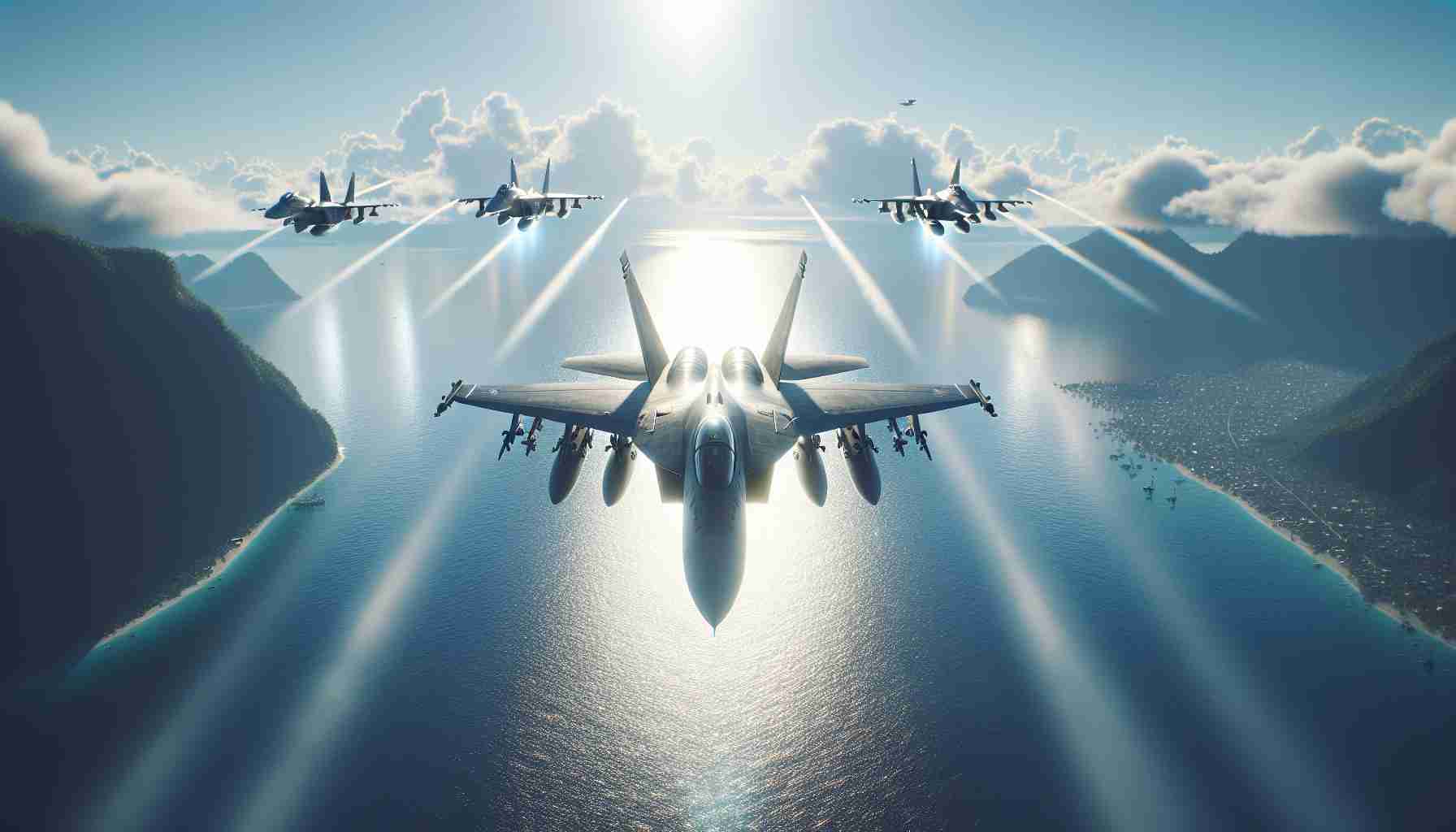In a strategic move reflecting rising tensions in Asia, the United States has deployed additional F-35C fighter jets to the Western Pacific region. This decision follows China’s recent military exercises, which have heightened concerns about regional stability and territorial claims in critical maritime routes.
The deployment of these fifth-generation aircraft underscores the U.S. commitment to maintaining a balance of power in the Pacific. The F-35C Lightning II is a state-of-the-art stealth multirole fighter designed for aircraft carrier operations. Its capabilities include advanced sensor systems and enhanced aviation technology, making it a formidable force in modern aerial combat.
China’s growing naval prowess and its assertive drills have pushed neighboring states and military analysts to reassess the security dynamics in the region. The show of strength by the U.S. serves not only as a deterrent but also as reassurance to allies concerned about the shifting power balance.
New technologies play a pivotal role in this strategic chess game. Enhanced radar evasion, networked communication protocols, and superior combat capabilities of the F-35C are set to contribute significantly to intelligence, surveillance, and reconnaissance (ISR) operations. Analysts suggest this deployment could mark the beginning of a technological arms race in the skies over one of the world’s most contested waterways.
As the international community watches, the addition of these cutting-edge jets highlights the U.S. intention to safeguard freedom of navigation and regional peace amid growing uncertainties in the Pacific theater.
The Geopolitical Impact of F-35C Deployment in the Pacific
The recent deployment of the United States’ F-35C fighter jets to the Western Pacific reflects a critical juncture in the geopolitical landscape of Asia. As tensions continue to simmer, this strategic decision underscores emerging trends and innovations in military technology and their implications on international relations.
Technological Advancements and Military Superiority
The F-35C Lightning II, designed for aircraft carrier operations, brings significant advancements to aerial warfare. These include:
– Stealth Technology: Allows it to evade enemy radar more effectively.
– Advanced Sensor Systems: Provide comprehensive situational awareness, aiding in both offensive and defensive strategies.
– Enhanced Network Capabilities: Facilitate seamless communication with allied forces, crucial in coordinated military operations.
Such features position the F-35C as a central player in modern military engagements, potentially influencing future conflicts’ outcomes.
Strategic Use Cases and Regional Impact
The deployment can be seen in several strategic contexts:
– Deterrence: Presenting a formidable presence to counterbalance China’s expanding naval activities.
– Reassurance to Allies: Reinforcing commitments to regional partners like Japan and South Korea, alleviating fears of rising Chinese influence.
– Freedom of Navigation: Upholding international maritime laws against unilateral territorial claims.
Market and Security Insights
The burgeoning market for advanced military aircraft is driven by such geopolitical shifts. The F-35C, with its cutting-edge technology, sets the benchmark for next-generation warfare systems. From a security perspective, the deployment signifies a move towards increased surveillance and intelligence capabilities enhancing both regional and global security frameworks.
Future Predictions and Trends
This development may herald the start of a technological arms race, with nations striving to develop or procure similarly advanced aircraft to assert their military capabilities. Predictions indicate a likely increase in defense spending among Pacific nations as they aim to match or counteract the perceived threats.
Sustainability and Defense Strategy
While focusing on technological superiority, sustainability remains a concern. The high operational cost of F-35C operations necessitates a strategic balance between military preparedness and economic feasibility. The United States continues to evaluate sustainable practices in its defense strategy, aiming for long-term efficiency.
For more information about the latest developments in military technology and strategic defense initiatives, visit the official Lockheed Martin website.







